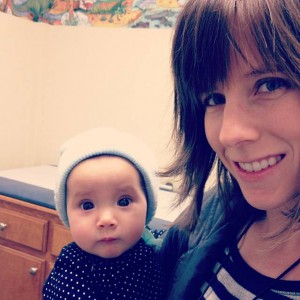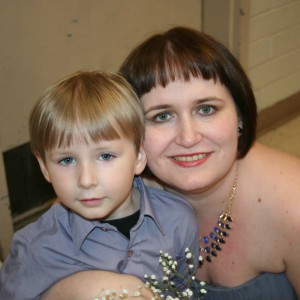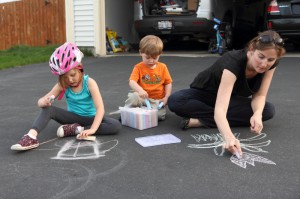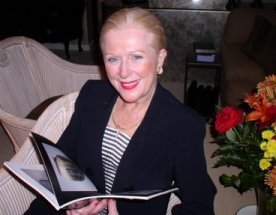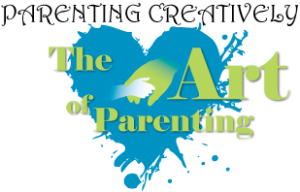“One of the best gifts you can give your toddler and yourself is to find time to join him where he is in that expectant openness, to slow down, to see what they see and hear what they hear, to let go of deadlines, plans, goals, wishes, to just be together.” ~ Kim Allsup, Children Growing
“One of the best gifts you can give your toddler and yourself is to…just be together.” Wow, doesn’t that just sum up Attachment Parenting, not only for the toddler years but for all ages and stages of our children, from in utero through adulthood?
Kim of Children Growing brought her post, “Toddlers Blooming in the Garden: Finding Wonder (Part 2 of 4),” to my attention earlier this month. While APtly Said posts original material, Attachment Parenting International recognizes select blog posts and articles related to Attachment Parenting (AP) through API Links and occasionally through reprints in the Attached Family magazine. But I just had to share this one on APtly Said, and so we are beginning a new series called “Editor’s Pick,” where we recognize outstanding AP posts from bloggers beyond APtly Said. Anyone can request a review of their blog post.
After reading Kim’s post, I was very interested in learning more about her and inviting her to blog for APtly Said. I hope we get to see more from her soon!
Kim introduces Children Growing as “a teacher’s blog about the art of helping children grow–at home, at school and in the garden.” Kim is a classroom and gardening teacher at The Waldorf School of Cape Cod in Bourne, Massachusetts, USA. She has been growing children for 43 years, including 21 years as a teacher, and gardening for 40 years. She is passionate about helping parents to return to their own memories of their childhood in order to re-experience wonder of the natural world with their own children.
And so, without further ado, here is Kim’s post:
Toddlers Blooming in the Garden: Finding Wonder (Part 2 of 4)
“If a child is to keep alive his inborn sense of wonder, he needs the companionship of at least one adult who can share it, rediscovering with him the joy, excitement, and mystery of the world we live in.” ~ Rachel Carson
Wonder in the first years of life creates the roots of self-motivation. It is the foundation of a personal connection to the world, the nexus of the self. Wonder cannot be scripted. It arrives unbidden. And while we cannot call forth wonder just when we want it, we can be expectant. The best a person can do is to be always listening, always watching, open to the possibility that something amazing might come our way, aware that it is possible, or even likely, that the marvelous will arise out of the commonplace, amid the happenings of everyday life. This openness to wonder is a transcendent state we aspire to as adults, yet it is the natural state of young children.
One of the best gifts you can give your toddler and yourself is to find time to join him where he is in that expectant openness, to slow down, to see what they see and hear what they hear, to let go of deadlines, plans, goals, wishes, to just be together. There is no better place to do this than the garden. You might head to the garden with the intention of meandering with your child at her speed, following her interests. Or, you might be working in the garden with your little one nearby, sensitive to noticing a moment that calls you to put down your rake so you can kneel on the damp earth and let your toddler lead the way to the discovery of a blossom or a butterfly or a strawberry or the green spikes of the emerging corn he planted himself.
A toddler’s mood of wonder can be fragile. Protect it by moving slowly, by dwelling in the fullness of silence, by noticing your child’s focus, using only a few carefully chosen words. Above all, don’t direct, explain or praise. When you find your way to becoming a companion to your toddler in an experience of wonder, you will find that time seems to stop. You may enter this realm for only four or five moments, but if you truly connect, if you drink in your child’s amazement, you will return to a place you once knew, a place where you lived as a child, where you feel beckoned to return. It is ironic that grown ups seek distant gurus to guide them to a consciousness of expectant, awareness when focused attention with a toddler, perhaps in a garden, might satisfy our mysterious yearning, might lead us back to the forgotten mindset our own early years. For, wonder is our first home.
Toddlers and young children usually live in a sense of wonder that is not shared with adults. If you think back to your own early years, perhaps you can remember moments of fascination that you did not share, that you could not share, for you did not have the words. Once you re-enter a toddler’s world of wonder, you will be awed by the value of this consciousness. You will want to provide your child with undisturbed time in nature, in a forest, by the sea, in a garden. For many families, a garden is the most accessible natural area. It can be on a balcony, of a tall apartment building, or a single garden bed in a tiny back yard. For a child, it is a place to witness the magic of growth, to know the beauty of life, to find wonder.


